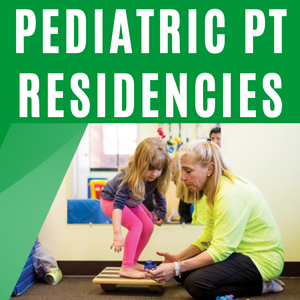Back
The Use of Pain Neuroscience Education in the Rehabilitation of a Pediatric Patient with Amplified Musculoskeletal Pain Syndrome Through Virtual Telemedicine: A Case Report

Bridget Will, PT, DPT
Physical Therapist
Connecticut Children's
West Hartford, Connecticut, United States
Tenney Georgetti, PT, DPT
Lead Physical Therapist
Connecticut Children's
Hartford, Connecticut, United States
Background & Purpose: Amplified musculoskeletal pain syndrome (AMPS) “is a term that encompasses the spectrum of manifestations of chronic pediatric musculoskeletal pain.” Treatment for AMPS includes cognitive-behavioral therapy, rehabilitation, and medication. Pain neuroscience education (PNE) is an educational model utilizing stories, metaphors, and images to teach patients about pain biology and physiology and has been found effective in the treatment of adults. There is limited published research on PNE outside of the adult population, particularly when combined with traditional physical therapy (PT) in a virtual telemedicine (VT) format for pediatrics. The purpose of this case report is to describe the benefits of PNE in the treatment of a pediatric patient with AMPS through VT.
Case Description: The patient was a young adolescent female diagnosed with AMPS and referred for PT in order to improve function, school participation, and address pain complaints. Treatment included traditional PT combined with PNE through VT, at a frequency of 1x/wk for 11 weeks. At baseline, the patient reported constant pain ranging from 2-9 on the numeric pain rating scale (NPRS). The patient’s level of physical function and disability was determined utilizing the functional disability inventory (FDI), to which she scored 16/60 (moderate disability). The patient was also attending school virtually secondary to her pain. PNE intervention consisted of the use of images displayed via screen sharing, in combination with metaphors and stories told by the therapist to aid in patient understanding of her pain.
Outcomes: At completion of intervention, the patient’s average post-treatment pain ranged from 0-2 on the NPRS scale. An improvement in function was noted by reports of completion of 4,000 steps without an increase in pain and a decrease in FDI score to 3/60 (no/minimal disability). The patient’s decrease in pain allowed for in person school participation. Patient with noted proficient understanding of PNE concepts through self-reports of listening to her body, resting when needed, and staying active. She reported PNE to be the most beneficial aspect of PT, specifically understanding the cause of her pain through PNE metaphors.
Discussion: This case report describes effective use of PNE with traditional PT in pediatrics through VT. Where VT platforms lack in ability for hands on treatment it allowed for excellent transfer of PNE knowledge. For this patient, PNE provided through VT allowed for increased pain knowledge, ability to identify pain triggers, and improved self-management techniques that would likely be lacking in traditional PT approaches. Clinicians should consider use of PNE with pediatric patients with AMPS. More research regarding the use of PNE in the pediatric population would be beneficial to more thoroughly note the effects on pain, function, and disability.
Case Description: The patient was a young adolescent female diagnosed with AMPS and referred for PT in order to improve function, school participation, and address pain complaints. Treatment included traditional PT combined with PNE through VT, at a frequency of 1x/wk for 11 weeks. At baseline, the patient reported constant pain ranging from 2-9 on the numeric pain rating scale (NPRS). The patient’s level of physical function and disability was determined utilizing the functional disability inventory (FDI), to which she scored 16/60 (moderate disability). The patient was also attending school virtually secondary to her pain. PNE intervention consisted of the use of images displayed via screen sharing, in combination with metaphors and stories told by the therapist to aid in patient understanding of her pain.
Outcomes: At completion of intervention, the patient’s average post-treatment pain ranged from 0-2 on the NPRS scale. An improvement in function was noted by reports of completion of 4,000 steps without an increase in pain and a decrease in FDI score to 3/60 (no/minimal disability). The patient’s decrease in pain allowed for in person school participation. Patient with noted proficient understanding of PNE concepts through self-reports of listening to her body, resting when needed, and staying active. She reported PNE to be the most beneficial aspect of PT, specifically understanding the cause of her pain through PNE metaphors.
Discussion: This case report describes effective use of PNE with traditional PT in pediatrics through VT. Where VT platforms lack in ability for hands on treatment it allowed for excellent transfer of PNE knowledge. For this patient, PNE provided through VT allowed for increased pain knowledge, ability to identify pain triggers, and improved self-management techniques that would likely be lacking in traditional PT approaches. Clinicians should consider use of PNE with pediatric patients with AMPS. More research regarding the use of PNE in the pediatric population would be beneficial to more thoroughly note the effects on pain, function, and disability.

.png)
.png)
.png)
.png)
.png)
.jpg)
